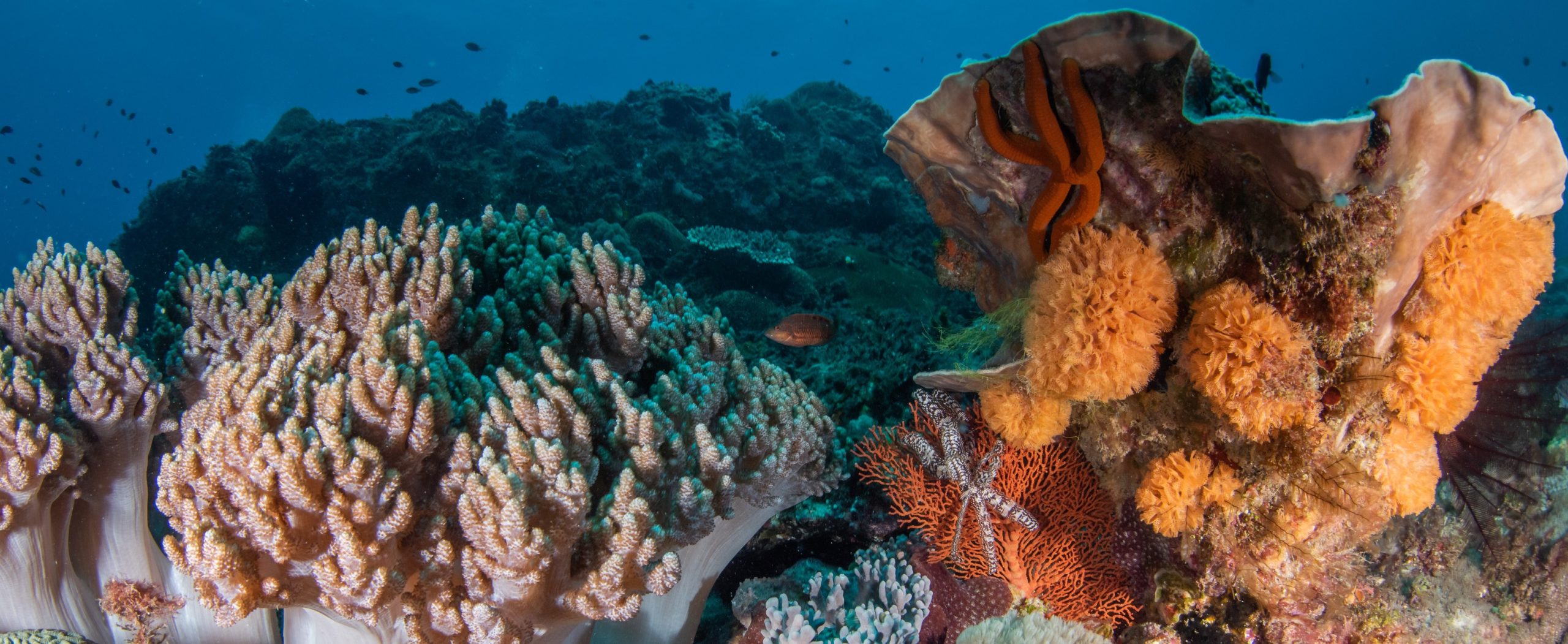1. Quantitative subtidal surveys of fishes, macro-invertebrates and sessile organisms at 33 sites within the Lord
Howe Island Marine Park revealed a rich fauna and flora, including 164 fishes, 40 mobile invertebrate taxa, 53 coral and other sessile invertebrate taxa, 32 algal taxa, and two seagrasses. The biota in this newly-zoned marine park was overwhelmingly tropical when species lists were tabulated; however, species with distributions centred on temperate coasts of eastern Australia and New Zealand occurred in disproportionately high densities compared with the tropical species.
2. Lord Howe Island reefs were generally in good condition. Virtually no bleached coral was observed (0.2% of
the reef surface; 0.8% of total hard coral cover). Living scleractinian coral comprised the predominant group of
organisms growing on reef surfaces, with 25.5% cover overall. Other major taxa observed were brown algae
(18.8% cover) and red algae (16.9% cover).
3. Three distinctive community types were identified within the marine park—coral reefs, macroalgal beds and an offshore/open coast community. The distribution of these community types was strongly related to wave exposure, as indicated by an extremely high correlation with the first principal coordinates axis for biotic data (R2 5 0.80).
4. The close (o3 km) proximity of tropical coral and temperate macroalgal community types off Lord Howe
Island is highly unusual, with localized patterns of nutrient enrichment suggested as the primary cause. The
macroalgal community type is only known from a small area off the south-western coast that is not protected
from fishing. This community is considered highly susceptible to threats because of potential impacts of global
warming and the possibility of expansion of sea urchin barrens. Coral bleaching and ocean acidification associated with global climate change also threaten the coral reef community, which includes relatively high
numbers of endemic and near endemic fish species.
